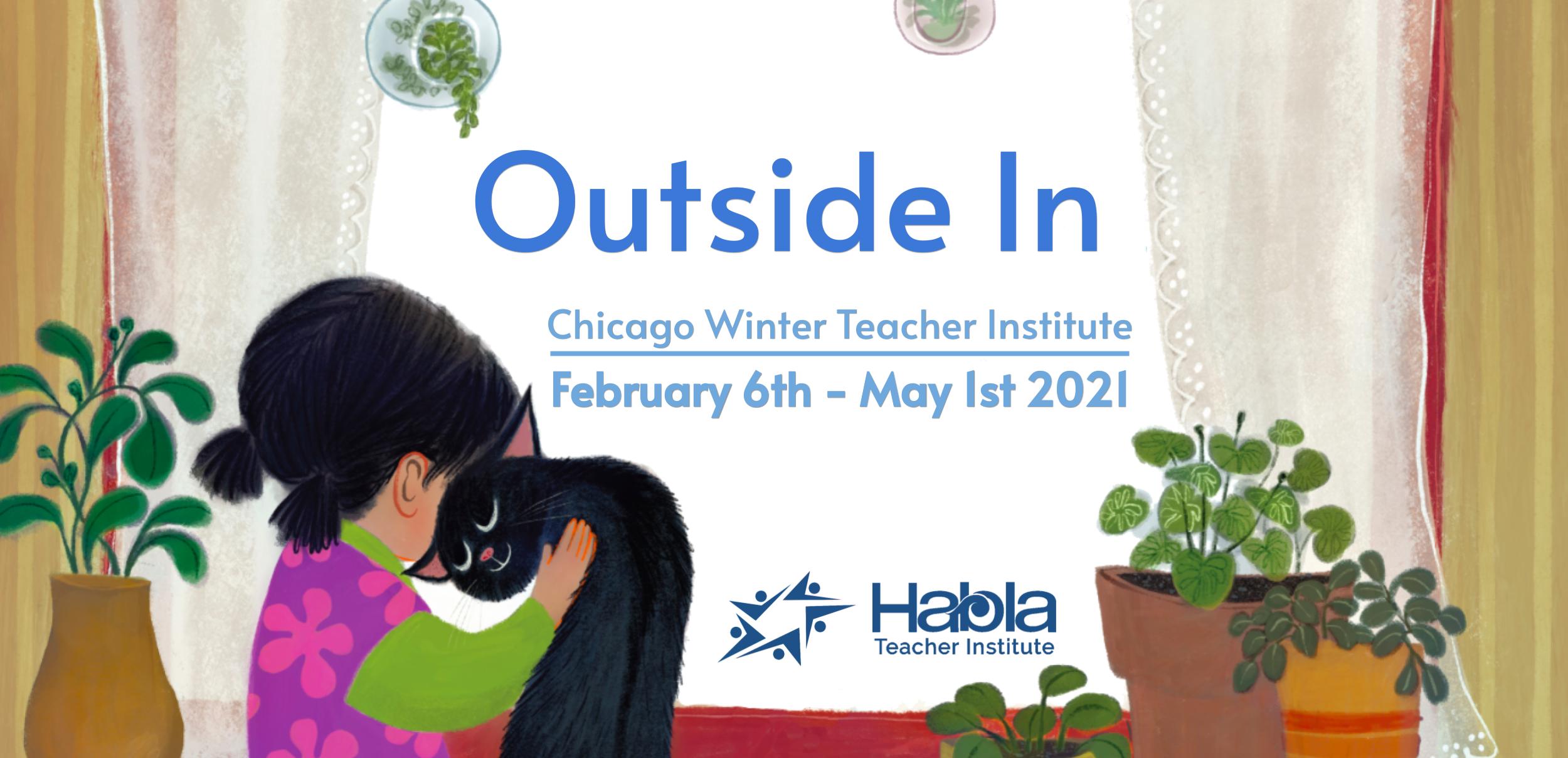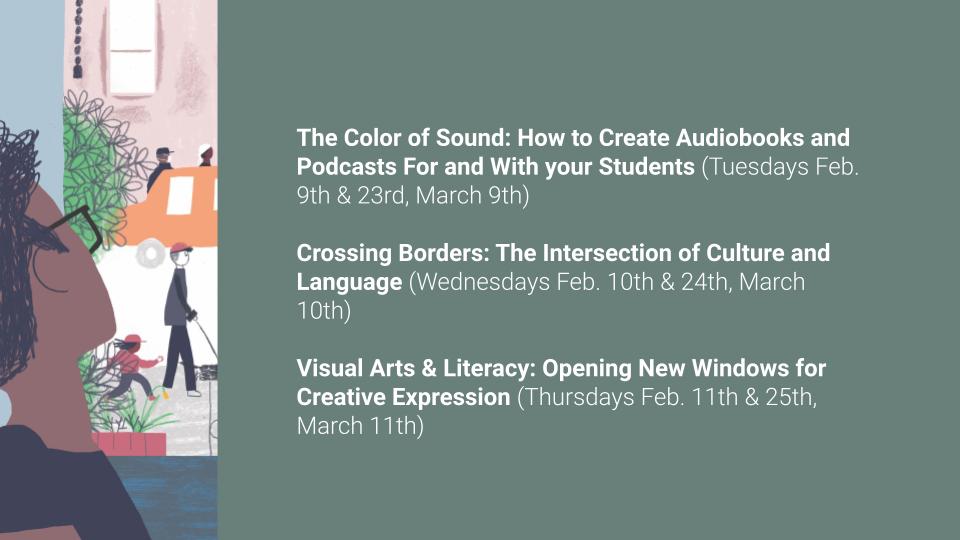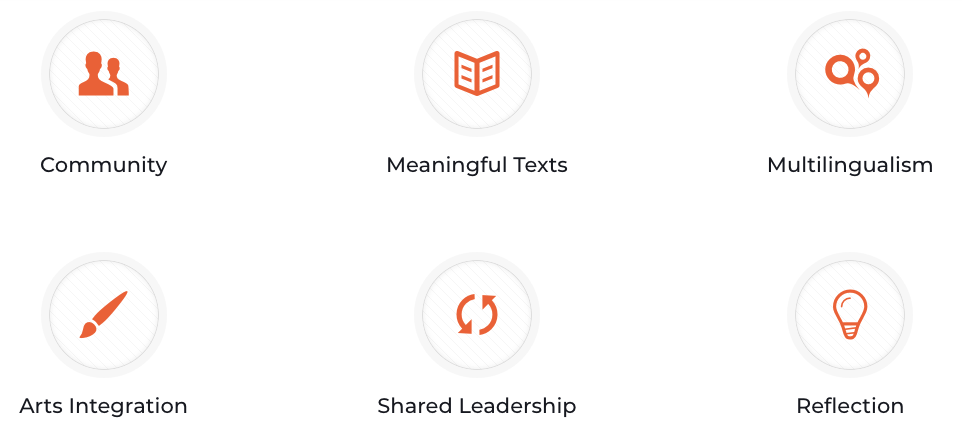
“and reached each other without touching”
LeUyen Pham
2020 certainly came with its challenges, but it has also been a time to learn new ways of doing things, to reflect on our common good across cultures and borders, and to take stock of what really matters in our work and in our homes. At Habla’s Chicago 2021 Winter Institute we spent an extraordinary time together reflecting on our past year by exploring the concept of OUTSIDE / INSIDE through a wide range of arts-integrated strategies. The institute began on Saturday, February 6th, 2021 with a set of shared experiences using the book Outside, Inside by LeUyen Pham to inspire our own reflections on and innovative responses to our current dilemmas and opportunities as educators in a plague year. By bringing the OUTSIDE in and the INSIDE out - as a simultaneously separated and joined together community - across cultures, across borders, across age groups, and across languages and art forms, we reclaimed together a sense of our collective higher purposes, of our strained but sustained connectedness, and of all of our capacities to respond to crises with resilience and with love for our mutual dedication to our students and to the highest visions of our calling. We reclaimed both our playfulness AND our seriousness, our planning AND our improvising, and that subtle intersection between our personal and our professional growth.

We are deeply grateful for the partnership that has been forged between Habla Center for Language and Culture, Summit School District 104, and Berwyn North School District 98 (with support from the Department of Education’s Office of Innovation and Improvement). This is one of those rich and rare collaborations that bring out the best in all the partners.
Following that first Saturday session, participants chose among different strands of inquiry for engaging in a set of promising new educational practices:

The institute culminated in a celebratory symposium on Saturday, May 1st, where participants from each strand shared their work and reflections.
As in all of Habla’s work, the values embedded in the practice include:

When these values are held to, it is amazing how quickly we can build a sense of community, even when we are radically separated and working virtually.
Habla commits to generating deep on-line documentation of the learning experiences and resources engaged at each institute. This is intended to free up teachers to explore effective new strategies experientially, without having to worry about keeping detailed notes. Instead, participants discover capacities and options from the inside as learners themselves.
Habla institutes cycle between various learning modes, including large group work, small group work, and individual work; between moving and being still; between speaking and listening and being silent alone and together; between various expressive art forms; and of course, between INSIDE and OUTSIDE.
This institute draws on a variety of print, visual, and audio “texts”. We work to understand intersectionality (the interconnected nature of social categorizations such as race, class, and gender) through intertextuality (creating text as an expansion upon pre-existing texts), through transmediation (expansion of works through translation into other media), through narrative plentitude (a wide variety of non-stereotypical voices of self-representation ), and through translanguaging (representations that engage multiple languages, cultures, and art forms).
After our encounters with a set of expanded teaching and learning options, we look together “Behind the Curtain” to discuss the hows and whys of that particular encounter being structured the way that it was, and we collectively suggest adjustments to the practice to continually grow the work.

This 2021 Winter Institute is an innovation unto itself. Traditionally, Habla Teacher Institutes are in the Summer, and are structured as a week-long intensive immersion in a world OUTSIDE the everyday press of demands placed upon us in our classrooms. But this institute is spread out over several weeks, while we are still INSIDE our classrooms (whether live or virtually), providing new opportunities to try out strategies in real time, and to then report our findings back to our peers. Building the plane while flying it. Flying the plane while building it.
